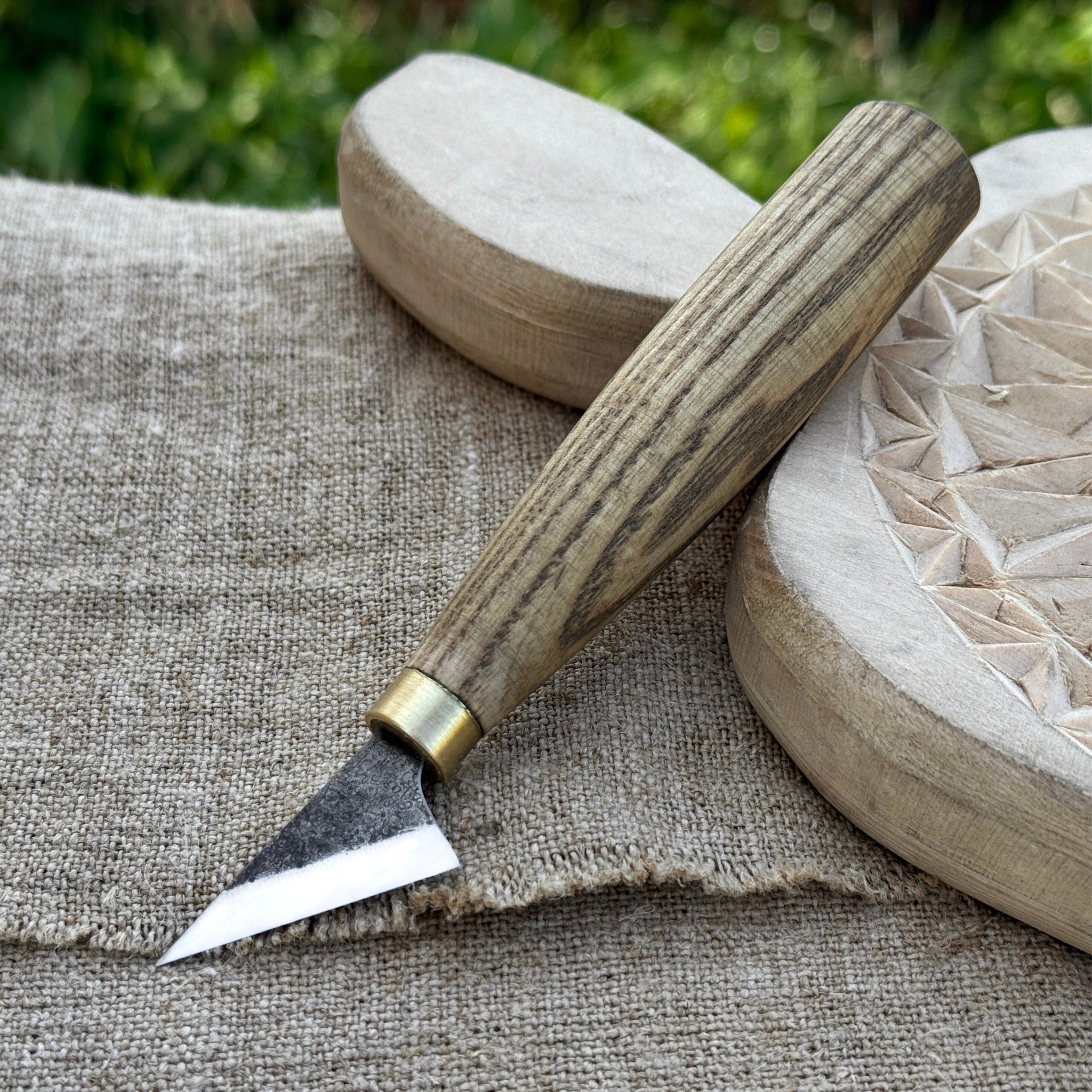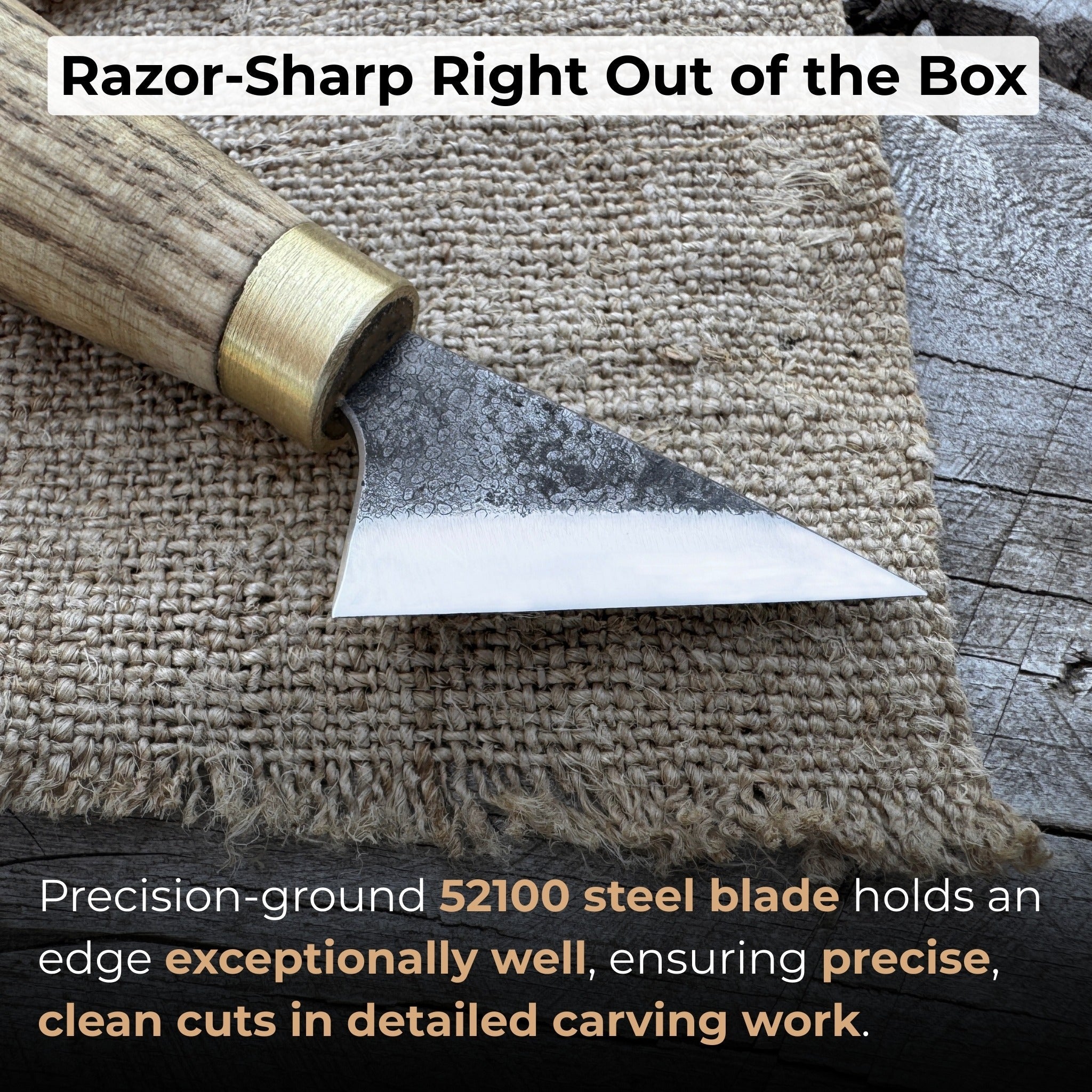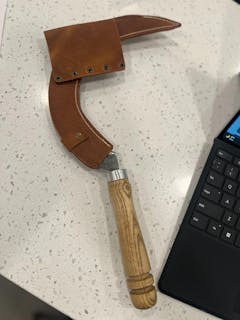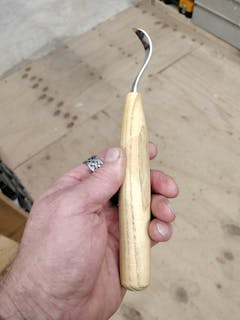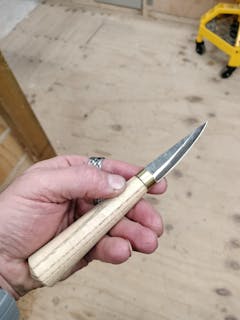Chip Carving Knife, 3.5 cm (1.4 inches)
Introduction to Skew Knives
The skew knife is a valuable tool, distinguished by its angled blade, which facilitates precise cuts. Compared to the skew chisel, it offers greater maneuverability for detailed work and whittling wood.
The blade's design allows for diverse wood carving tasks, including fine detail creation, shaping, and smooth, sweeping cuts. Its capacity for controlled push strokes enhances accuracy, particularly in confined areas. A comprehensive knife set, incorporating a skew knife, is beneficial for expanding your range of carving tools.
The knife's primary advantage is its ability to produce clean cuts. Shearing wood fibers results in smoother surfaces and sharper edges, crucial for achieving a professional finish. It is especially useful in relief carving for depth, caricature carving, and geometric patterns or lettering.
So, if you are looking to purchase a complete tools set, make sure it includes a skew knife, as it will greatly expand your carving capabilities.
Key Features of a Skew Carving Knife
The skew carving knife can achieve precision cuts and make delicate layering in carving projects thanks to its specialized blade geometry and finely honed edge. Here is a breakdown of key characteristics to consider when choosing one:
Blade Design and Angle
Blade lengths for a skew knife usually range from 1.5 to 3 inches, balancing precision and handling. The angled tip, or skew, commonly set between 15 and 30 degrees, simplifies smooth slicing and minimizes tearing. Compared to straight or gouge blades, skew knife blades provide better control.
Handle Ergonomics
Modern wood carving kit handles come in various designs, including straight, contoured, and ergonomic shapes:
- Rubberized/textured materials: Enhance grip, ensuring a secure hold even in damp conditions.
- Contoured handles: Especially valued for their ergonomic advantages, helping to reduce hand fatigue during extended sessions.
- Traditional wooden handles: Often crafted from hardwoods like oak or walnut, provide a classic aesthetic but may lack the non-slip properties of synthetic options.
Blade Materials and Durability
Skew knife blades are commonly made from high-carbon steel, stainless steel, or other durable materials, making them suitable for various tasks, including those that require a detail carving knife or a versatile carving knife.
High-Carbon Steel
- Pros: Excellent sharpness, retains edge well for precise cuts.
- Cons: Requires regular maintenance to prevent rust and corrosion.
Stainless Steel
- Pros: Resistant to rust and corrosion, requires low maintenance.
- Cons: May need frequent sharpening to maintain a fine edge.
High-Carbon Stainless Steel Blends
- Pros: Combines sharpness and durability with resistance to rust, cost-effective.
- Cons: Typically less hard than pure high-carbon steel, requiring occasional sharpening.
Popular Types of Skew Knives
A skew knife comes in a variety of versions, each tailored to specific tasks and carving techniques. When choosing a carving knife kit, you might find one or more of the knife types listed below included:
Straight Skew Knife
This skew carving knife features a simple, angled blade aligned directly with the handle. It is best suited for creating clean lines and edges in relief carving or flat-plane carving. It also excels in making controlled slicing and fine detailing.
Hooked Skew Knife
This wood carving knife has a curved or hooked blade that can add depth and detail to carvings.
Beveled Skew Knife
Usually equipped with two cutting edges, the beveled skew knife allows for more flexibility and efficiency, as you can use either side depending on the angle of your cut. This versatility supports both push and pull cuts, making it a valuable addition to your carving tool set.
Offset Skew Knife
An offset skew knife has its blade set lower than the handle, forming an "L" shape. This design gives you more room for your knuckles, making it comfier for long sessions and tricky angles, especially useful in whittling wood carving.
Common Mistakes to Avoid
To master any tool from a chip carving kit or any type of carving knife set, you need patience and regular practice. There is no secret formula—just this tried-and-true method. However, it is always wise to learn from others' mistakes. Here are some of the most common ones to avoid when using a skew knife:
Incorrect Angle
Holding the blade at the wrong angle can lead to tearing or splintering the wood. The best angle ranges from 15 to 30 degrees, depending on the material you are working with. It is important to maintain consistent contact between the blade's bevel and the wood to achieve smooth, clean cuts.
Applying Too Much Pressure
Pressing too hard can cause the blade to dig into the wood, leading to uneven cuts or even damaging the project.
Skipping Practice
Jumping straight into detailed projects without practicing basic cuts can lead to frustration and mistakes. It is important to get comfortable with the tool first.
Neglecting Blade Maintenance
A dull skew knife blade can make carving difficult and increase the risk of slipping, which could result in injury or poor-quality cuts. So, regular sharpening is essential.
Neglecting Skew Carving Knife Care
Not cleaning the skew carving knife blade after use or leaving it exposed to moisture can lead to rust and dullness. Regularly clean, oil, and store your knife in a dry environment to extend its lifespan and maintain sharpness.
